| Umělec 2009/1 >> Jacques Rancière – The Two ‘Resistances’ of Art | Просмотр всех номеров | ||||||||||||
|
|||||||||||||
Jacques Rancière – The Two ‘Resistances’ of ArtUmělec 2009/101.01.2009 Karin Rolle | review | en cs de es |
|||||||||||||
|
The image of the free and rebellious artist who criticizes and reshapes society has lost much of its credibility. Yet the French philosopher Jacques Rancière still believes art to have political significance; he discusses the potential for resistance in contemporary art, presenting a theory in which the resistance of art is a relationship of tension between two different resistances.
Scant, impoverished landscapes are the subjects of Sophie Ristelhueber’s photography. Roads and paths thrust their way through her images, slicing across rocky deserts, snaking their way up mountains and deep into green valleys. These roads traverse these vast spaces, spanning great distances yet still managing to intersect one another. Stones, ditches and screens to block off traffic. Sophie Ristelhueber christened her series, on display for the first months of 2005 in the Musée d’art moderne et contemporain in Geneva, with the monogram WB—Westbank. With this designation, the almost unnoticeable stone heaps and geological fault-lines become identifiable as roadblocks erected by the Israeli army and Jewish settlers in the territory. Jacques Rancière has selected the work of Sophie Ristelhueber to describe what resistant art means. Here, the carefully composed natural ensembles are torn out of their aesthetic order through Ristelhueber’s positioning of them in the context of the Middle East conflict. It conveys a subtle political message in her photographs without turning them into two-dimensional propaganda. The specific vocabulary of Ristelhueber’s photography is in its provisional, debatable, ambiguous character. Her photographs can equally be read as artistically composed, aesthetic landscapes or as political documentation. This tension is the vocabulary of resistant art, which, in the views of Jacques Rancière, needs to be brought back to life. The 20th century denied artwork with any expression of the tension between the aesthetic and the political. The fin de siècle lost itself in aestheticism, driving art out from the world. Later, the totalitarian states of both right and left appropriated art to illustrate political ideologies. Even the democratic states and their logic of the marketplace utilized art in their own service, hijacking aesthetic forms to sell commodities. Attempts to preserve the autonomous status of art bring artwork towards the realm of ethics. Taking a shot at Jean-François Lyotard, Rancière describes the direction that art must take in the service of the “others”—noting the catastrophes of the 20th century and learning from them. Rancière views these three movements—the return of art towards aesthetics, the convergence of art and politics, and the intertwining of art and aesthetics—as mutually irreconcilable trends. To him, there is no difference as to whether art retreats away from, or smoothly blends into, society at large; Rancière finds these univocal conclusions to be incomplete. In his view art must, have its specific potential returned to it. And this, for Rancière, lies in its ambiguity, in its oscillation between differing orders. In the oscillation between aesthetic and political, wherein lies the resistant potential of art, we can begin to see these two “resistances.” For Rancière, “resistance” is a dazzlingly iridescent word. On one hand, it means something that makes the accustomed path more difficult and must be overcome, like a stone on a well-trodden trail. “Resistance” can just as easily be the exact opposite of the passive stone; it can be the active struggle against a static order. Jacques Rancière argues that both meanings are equally applicable and, through the highly fraught relationship that is created between them, a resistant art is possible. Art is the likeness of the unlike: it is the resistance of the stone (the retreat from life into the aesthetic) and the emancipating resistance (the overreaching of art into the political). Rancière grounds his theory in a tradition that takes its point of departure from the philosophy of Immanuel Kant. In his Critique of Judgment, Kant lists the specific methods in which art acts upon human comprehension. If the material objects of the everyday are unambiguously comprehensible, art plunges the spectator into a sense of helplessness. It removes the logic of the clearly comprehensible naming. The free aesthetic play that is thus initiated can also be found in the work of Friedrich Schiller, in his Aesthetic Education of Mankind. In the theories of Kant and Schiller, art forms a sensuously experienced freedom in the mind of each individual human, one sparked by a change in the lived world. This newly-lived world is not simply left unsolved, but in fact pushed upwards into an endless infinity. Art opens a view into an end that still remains lacking. And for Rancière this makes art different from any other form of political action. Resistant art speaks a language of ambiguity, allowing it to be read equally for aesthetic and political messages without falling back into a univocal single meaning. It is both the passive resistance of the stone, and the active resistance of emancipation. And it is solely this tension between these two resistances that makes us aware of resistant art, in the formulation of Rancière: “For the resistance of art not to disappear into its opposite, the unsolved tension between the two resistances cannot but remain.” Jacques Rancière, Ist Kunst widerständig? Merve 2008, published, translated into German and supplemented with an interview by Frank Ruda and Jan Völker, 109 pages, 8 Euro.
01.01.2009
Рекомендуемые статьи
|
|||||||||||||
|
04.02.2020 10:17
Letošní 50. ročník Art Basel přilákal celkem 93 000 návštěvníků a sběratelů z 80 zemí světa. 290 prémiových galerií představilo umělecká díla od počátku 20. století až po současnost. Hlavní sektor přehlídky, tradičně v prvním patře výstavního prostoru, představil 232 předních galerií z celého světa nabízející umění nejvyšší kvality. Veletrh ukázal vzestupný trend prodeje prostřednictvím galerií jak soukromým sbírkám, tak i institucím. Kromě hlavního veletrhu stály za návštěvu i ty přidružené: Volta, Liste a Photo Basel, k tomu doprovodné programy a výstavy v místních institucích, které kvalitou daleko přesahují hranice města tj. Kunsthalle Basel, Kunstmuseum, Tinguely muzeum nebo Fondation Beyeler.
|








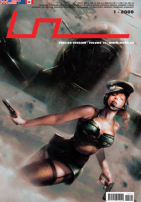


















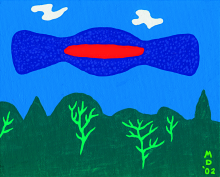
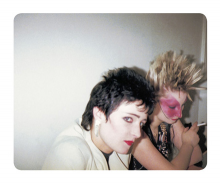
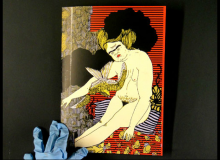
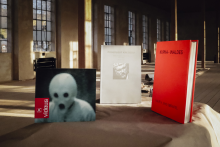


 New book by I.M.Jirous in English at our online bookshop.
New book by I.M.Jirous in English at our online bookshop.
Комментарии
Статья не была прокомментированаДобавить новый комментарий